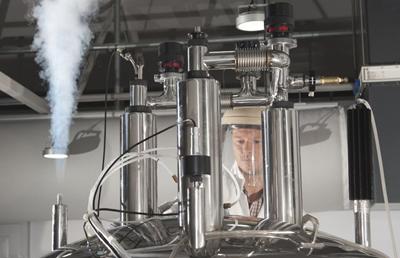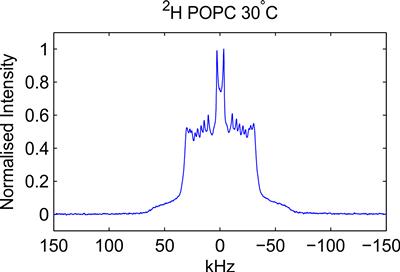The Interdisciplinary Centre for Nuclear Magnetic Resonance was established in 2010 in custom built laboratories located in building 27 shared with Chemistry. The location outside the Life Science Building was directed by our ambitions to integrate the university’s NMR facilities and develop an environmentally friendly infrastructure, recycling precious helium gas and centralising support staff and hardware.
We offer the ability to collect data at both 600MHz and 400MHz in both solution and solid state and covering a multitude of nuclei. The facility routinely carries out work on small molecules, proteins, membrane systems and solid samples.
We also regularly collect data at the national NMR facilities operating at up to 950MHz.
NMR Systems

Varian Inova 600MHz Solution NMR System with cryogenically cooled probe
Configured with a 5mm 1H, 13C, 15N inverse detection probe with the electronics cooled to 20K to enhance signal to noise, this system is aimed at biomolecular NMR with the emphasis on protein structure, protein/ligand interactions, affinity measurements, protein dynamics as well as qualitative/quantitative metabolite analysis. Exploring the molecular world using NMR has many possibilities so please see the NMR entry in the Techniques section which also details what you need to think about in terms of sample preparation and amount.
Supporting your data analysis is a dedicated suite of Linux and Apple Mac systems running the latest software to aid peak assignment and analysis.
The charges for using the 600MHz solution NMR system are detailed in Facility Charges under Biological Sciences: Interdisciplinary Centre for NMR 600 Liquid.

Varian NMR System 600MHz Dual Solids/Solution NMR System
This system features three room temperature solution probes; a standard 5mm HCN triple resonance, a 5mm pentaprobe covering HCNPD and an 8mm HCN probe tunable to 19F.
The 3.2mm and 1.6mm solid state probes can spin samples at up to 20kHz and 40kHz respectively and be equiped with the low gamma accesssory extending the range of nuclei available for study. This system is routinely used to investigate protein/membrane interactions and effects, protein structure in microcrystalline and fibrillar form and new NMR methodologies to extract novel information about biomolecular form and function. Exploring the molecular world using NMR in the solid state has many possibilities so please see the NMR entry in the Techniques section which also details what you need to think about in terms of sample preparation and amount.
Supporting your data analysis is a dedicated suite of Linux and Apple Mac systems running the latest software to aid peak assignment and analysis.
The charges for using the 600MHz solution NMR system are detailed in Facility Charges under Biological Sciences: Interdisciplinary Centre for NMR 600 Solid.

Chemagnetics 400MHz Wide Bore Solids NMR System
The 400MHz system is equipped with high power amplifiers and is routinely used to investigate the behaviour of lipids in membranes in the presence of peptides and proteins as well as the states of catalysts in material science.
A range of probes are available including 3.2mm, 4mm and 6mm magic-angle spinning probes and a 5mm single resonance static probe which are tuneable to a broad range of nuclei. Experiments can be conducted at a range of temperature from –100C to 120C.
Exploring the molecular world using NMR has many possibilities so please see the NMR entry in the Techniques section which also details what you need to think about in terms of sample preparation and amount.
Supporting your data analysis is a dedicated suite of Linux and Apple Mac systems running the latest software to aid peak assignment and analysis.
The charges for using the 600MHz solution NMR system are detailed in Facility Charges under Biological Sciences: Interdisciplinary Centre for NMR 400 Widebore (1141).
Please acknowledge the facility in publications: “We thank the Interdisciplinary Centre for NMR within Biological Sciences, University of Southampton.”